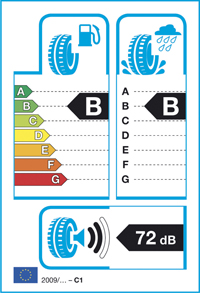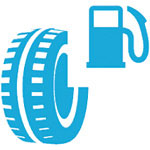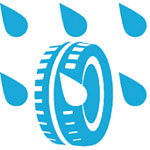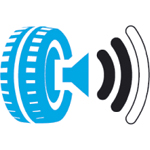
c
We've been talking to drivers* about the impending tyre labelling system and nine out of 10 we spoke to weren't aware of it at all. Given that more than eight out of 10 of them have purchased tyres in the last two years (and are presumably likely to buy again in the next), it's important for all consumers to understand what it means.
The aim of the labelling system is broadly similar to the aim of all energy labels (as already seen on household goods and even on cars), which is to give consumers an indication of which products are the most economical before they buy.
As well as being a handy comparison tool, the label gives manufacturers an incentive to produce tyres with better ratings. This has worked for domestic appliances, where the level of improvement has meant the authorities have had to re-evaluate the rating scales, once all manufacturers are producing towards the top end of the scale.
What information is included?
The label will be applied to all new tyres, whether they are optional ones, sold when you buy the vehicle or aftermarket replacements.
Tyre suppliers are obliged to provide the information in any technical promotional material, including leaflets, brochures and on the internet. Retailers must ensure it is visible to buyers at point of sale – using a sticker or label like the one shown below (minimum size allowed is 7.5cm x 11cm), that the buyer can see before buying.
Every label must display all three ratings in the format shown:

1) Fuel efficiency
This is a measure of the tyre's rolling resistance, carried out on a calibrated test rig. The lower the rolling resistance the better the fuel economy. The ratings relate to the table below.

2) Wet grip
This has been added, because while most makers can make tyres with very low rolling resistance, this will be at the expense of grip.
Adding the grip rating to the label ensures tyre manufacturers don't compromise grip in order to get a good energy rating. The rating is based on wet braking in a straight line, carried out to a standard method on a controlled wet surface.
The wet grip rating is based on a standardised wet braking test. In reality, the braking distance depends on a host of additional factors, (like the efficiency of the anti-lock braking system and the tyre loadings for example), but industry analysts have estimated that using a grade A tyres over a Grade G ones (assuming all four tyres are fitted) can result in a vehicle stopping in 30% shorter a distance.
This is a useful indicator, but is nowhere near as comprehensive as our own wet grip assessments, which consider both straight-line braking and traction and resistance to aquaplaning in bends.

3) Noise
Noise has also been added, essentially treating this as another environmental concern.
Exterior noise levels are split into three categories and the figure is the noise level measured in decibel (dB). The curved bars coming out of the tyre show it in comparison with the new European tyre exterior maximum noise levels to be introduced until 2016 (72dB).
1 black sound wave = 3dB less than the future tighter European limit (very quiet).
2 black sound waves = already compliant with the future European limit (fairly quiet).
3 black sound waves = compliant with the current European limit but not with the new one (noisiest allowable).
While it will help drive noise levels down, we consider this less useful to owners, (and perhaps more relevant to their neighbours!), as it is based on a track side measurement of exterior tyre noise.
Most owners will never experience the noise from this perspective and are unlikely to be inclined to change their choice based on this rating. Our own noise assessments are of more use to buyers, as they consider measured exterior noise, and interior tyre noise, subjectively assessed by two testers in the car.
Wear's the missing rating
When we asked drivers* what they thought about the label, 71% told us it would be likely to influence their buying decisions.
However, when asked about which factors were most important, price, grip and tyre life came out as top priorities. One person commented "I want safety and economy, the grading system ought to help with this. Safety in the wet is more important - economy is no good if you are dead."
When thinking about noise, just 64% of people thought noise was important, while nearly a third specifically rated it as not important. Wear was considered important by 91% of respondents, while just 6% said it was unimportant.
Fortunately for Which? subscribers, we offer the only independent test results for tyre wear in the UK, allowing you to compare tyres on this important factor before buying.
*Which? surveyed 1,291 UK consumers (general public) in October 2011. It also surveyed 2,742 Which? members to find out how likely it was that the new labelling system will affect their decision making processes when they next buy tyres.





